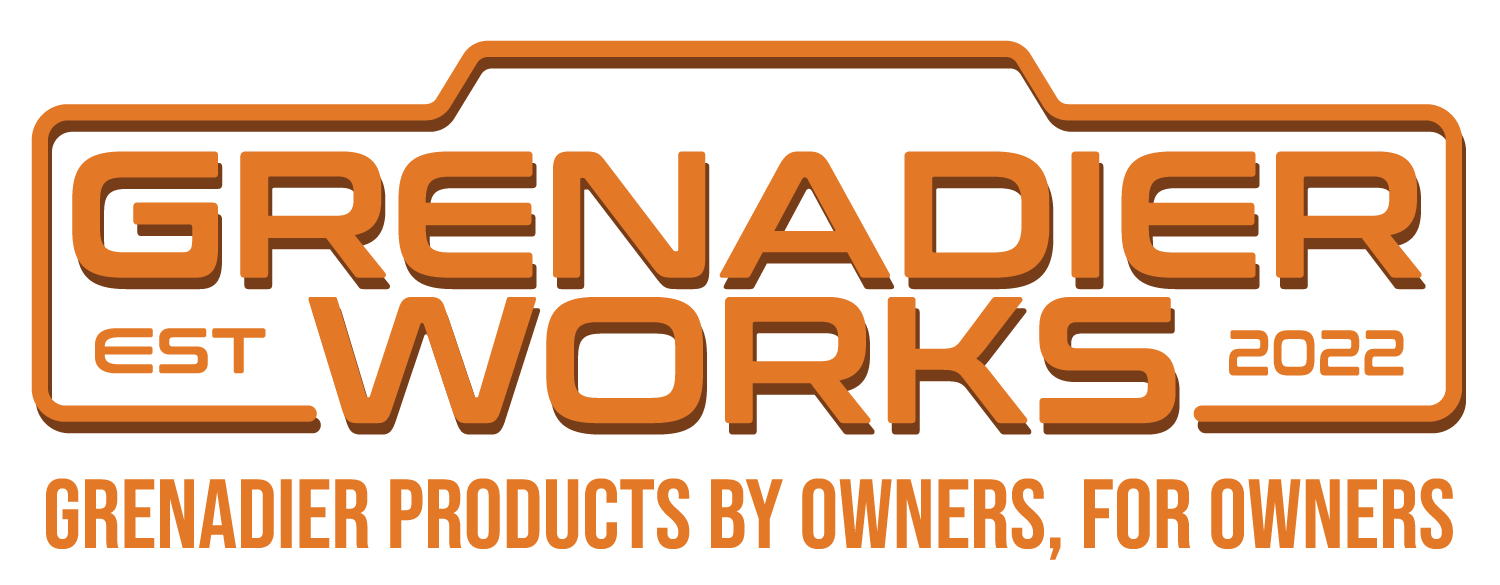I have access to the BMW system, nope it can’t read the entire vehicle. Ineos has a security gateway in place. Nope BMW ISTA can not reset the service interval. It can read some modules, but it is not able to perform anything in regards to Ineos systemsHave any of you plugged a real diagnostic into this car to see what's what? It's basically a BMW isn't it? I just got my truck and will try later but I'd imagine if I go by a generic BMW I'm able to get into all the modules, infotainment, reset service lights, code out start stop and things of that nature. (or maybe I can't)?
The Grenadier Forum
Register a free account today to become a member! Once signed in, you'll be able to contribute to the community by adding your own topics, posts, and connect with other members through your own private inbox! INEOS Agents, Dealers or Commercial vendors please contact admin@theineosforum.com for a commercial account.
You are using an out of date browser. It may not display this or other websites correctly.
You should upgrade or use an alternative browser.
You should upgrade or use an alternative browser.
The infotainment is Neusoft software not BMW, apart from the BMW engine ECU I thought the rest is bespoke softwareHave any of you plugged a real diagnostic into this car to see what's what? It's basically a BMW isn't it? I just got my truck and will try later but I'd imagine if I go by a generic BMW I'm able to get into all the modules, infotainment, reset service lights, code out start stop and things of that nature. (or maybe I can't)?
I have access to the BMW system, nope it can’t read the entire vehicle. Ineos has a security gateway in place. Nope BMW ISTA can not reset the service interval. It can read some modules, but it is not able to perform anything in regards to Ineos systems
Thank you for the info... hopefully some 3rd party releases an update. I use an autel808, I won't hold my breath.
Well saidNew owner, long time listener. Love the Fieldmaster in my driveway - but don't want it to end up as a lawn ornament. As such, I have the same concerns that float through this and other forums. When it comes to an owner's right of repair, Ineos does not get a pass because of its newness or size, it still must follow the law.
To begin with, Ineos may not coerce owners with claims that "we’ll void your warranty if you don’t use our dealers" under the Magnuson-Moss Warranty Act (2022). It also may not restrict diagnostic data access, repair manuals, or the tools necessary for service under the Right to Repair laws that are active in several states, the strongest of which exists in Massachusetts. If I lived there, I would have already filed a lawsuit because of the lack of material support from the company. It is 2025. The Grenadier has been on the U.S. market for three years, there is no longer an excuse for the lack of maintenance support. Because I don't live in Mass, I will file claims with the FTC and my state Attorney General (something that everyone who is interested in this issue can do).
I would note that the small number of Grenadiers on the road is not a defense for limited repair services, in fact it suggests just the opposite. From a marketing perspective this conversation is literally killing sales - the cool ads comparing the Grenadier to Defender are just too ironic. Right now a Grenadier is literally more of a mall queen than a new Defender because it is always tied to a dealership. These strings needs to be cut. Ineos must enable loyal owners, most of whom live great distances from dealers, to handle everyday tasks - without suffering constant, annoying warning indications.
This isn't just about marketing. From a legal perspective, there is no doubt that Ineos has the responsibility to enable owners to conduct common maintenance activity, such as oil service reset, TPMS programming, and windshield repair - all of which are supported by every other auto manufacturer. It must also enable independent repair shops to have access to core programming materials for both diagnosis and repair. Independent repair shops also should have access to repair parts that do not come through the dealer (tariffs will already bring enough added cost). Finally, the owners themselves should have access to a complete maintenance manual (even if online) and a parts website, regardless of the fact that there may be limited available inventory and long wait times.
I would note for any Ineos employee that might read this: While the information in this forum is only anecdotal - if it were to appear that Ineos was using the limited availability of parts and licensed diagnostic and repair software as a way to "herd" owners to the small number of Ineos dealers, that kind of behavior certainly meets the standard of anti-competitive behavior in both the U.S. and E.U. This could warrant a federal criminal investigation - and it is probably not a good time for that kind of scrutiny if you don't make cars in the U.S. If the company insists on maintaining practices that appear to be anti-competitive it will certainly lose access to its largest market - and that would suck. It's time to grow up. The fun bar story and comparisons with the old Defender got you going, but building a new brand buit on toughness and reliability needs the next step.
You sir are a scholar. Well said!New owner, long time listener. Love the Fieldmaster in my driveway - but don't want it to end up as a lawn ornament. As such, I have the same concerns that float through this and other forums. When it comes to an owner's right of repair, Ineos does not get a pass because of its newness or size, it still must follow the law.
To begin with, Ineos may not coerce owners with claims that "we’ll void your warranty if you don’t use our dealers" under the Magnuson-Moss Warranty Act (2022). It also may not restrict diagnostic data access, repair manuals, or the tools necessary for service under the Right to Repair laws that are active in several states, the strongest of which exists in Massachusetts. If I lived there, I would have already filed a lawsuit because of the lack of material support from the company. It is 2025. The Grenadier has been on the U.S. market for three years, there is no longer an excuse for the lack of maintenance support. Because I don't live in Mass, I will file claims with the FTC and my state Attorney General (something that everyone who is interested in this issue can do).
I would note that the small number of Grenadiers on the road is not a defense for limited repair services, in fact it suggests just the opposite. From a marketing perspective this conversation is literally killing sales - the cool ads comparing the Grenadier to Defender are just too ironic. Right now a Grenadier is literally more of a mall queen than a new Defender because it is always tied to a dealership. These strings needs to be cut. Ineos must enable loyal owners, most of whom live great distances from dealers, to handle everyday tasks - without suffering constant, annoying warning indications.
This isn't just about marketing. From a legal perspective, there is no doubt that Ineos has the responsibility to enable owners to conduct common maintenance activity, such as oil service reset, TPMS programming, and windshield repair - all of which are supported by every other auto manufacturer. It must also enable independent repair shops to have access to core programming materials for both diagnosis and repair. Independent repair shops also should have access to repair parts that do not come through the dealer (tariffs will already bring enough added cost). Finally, the owners themselves should have access to a complete maintenance manual (even if online) and a parts website, regardless of the fact that there may be limited available inventory and long wait times.
I would note for any Ineos employee that might read this: While the information in this forum is only anecdotal - if it were to appear that Ineos was using the limited availability of parts and licensed diagnostic and repair software as a way to "herd" owners to the small number of Ineos dealers, that kind of behavior certainly meets the standard of anti-competitive behavior in both the U.S. and E.U. This could warrant a federal criminal investigation - and it is probably not a good time for that kind of scrutiny if you don't make cars in the U.S. If the company insists on maintaining practices that appear to be anti-competitive it will certainly lose access to its largest market - and that would suck. It's time to grow up. The fun bar story and comparisons with the old Defender got you going, but building a new brand buit on toughness and reliability needs the next step.
Similar threads
- Replies
- 35
- Views
- 2K
- Replies
- 155
- Views
- 6K
- Replies
- 33
- Views
- 3K



